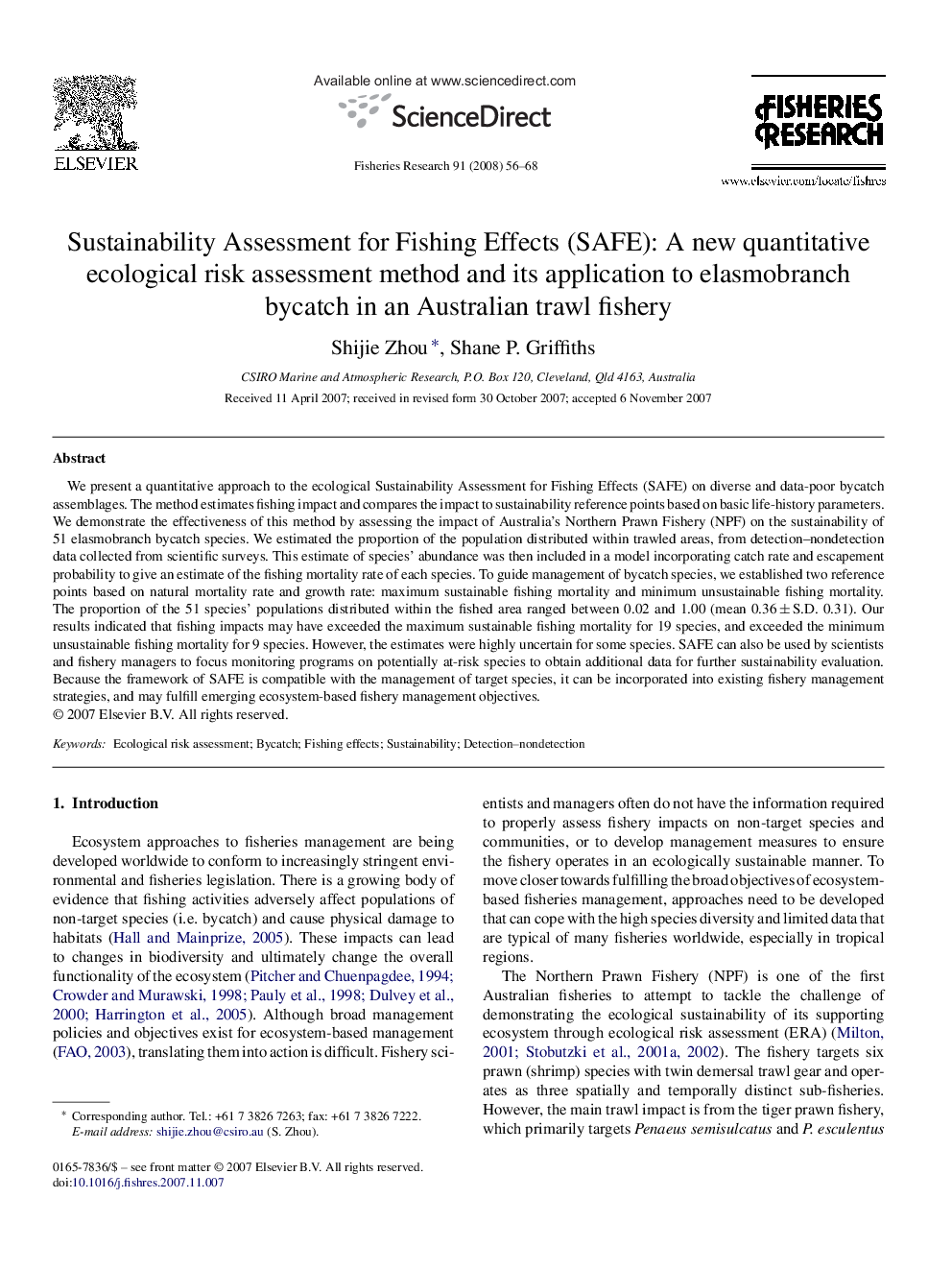| کد مقاله | کد نشریه | سال انتشار | مقاله انگلیسی | نسخه تمام متن |
|---|---|---|---|---|
| 4544411 | 1327194 | 2008 | 13 صفحه PDF | دانلود رایگان |

We present a quantitative approach to the ecological Sustainability Assessment for Fishing Effects (SAFE) on diverse and data-poor bycatch assemblages. The method estimates fishing impact and compares the impact to sustainability reference points based on basic life-history parameters. We demonstrate the effectiveness of this method by assessing the impact of Australia's Northern Prawn Fishery (NPF) on the sustainability of 51 elasmobranch bycatch species. We estimated the proportion of the population distributed within trawled areas, from detection–nondetection data collected from scientific surveys. This estimate of species’ abundance was then included in a model incorporating catch rate and escapement probability to give an estimate of the fishing mortality rate of each species. To guide management of bycatch species, we established two reference points based on natural mortality rate and growth rate: maximum sustainable fishing mortality and minimum unsustainable fishing mortality. The proportion of the 51 species’ populations distributed within the fished area ranged between 0.02 and 1.00 (mean 0.36 ± S.D. 0.31). Our results indicated that fishing impacts may have exceeded the maximum sustainable fishing mortality for 19 species, and exceeded the minimum unsustainable fishing mortality for 9 species. However, the estimates were highly uncertain for some species. SAFE can also be used by scientists and fishery managers to focus monitoring programs on potentially at-risk species to obtain additional data for further sustainability evaluation. Because the framework of SAFE is compatible with the management of target species, it can be incorporated into existing fishery management strategies, and may fulfill emerging ecosystem-based fishery management objectives.
Journal: Fisheries Research - Volume 91, Issue 1, May 2008, Pages 56–68